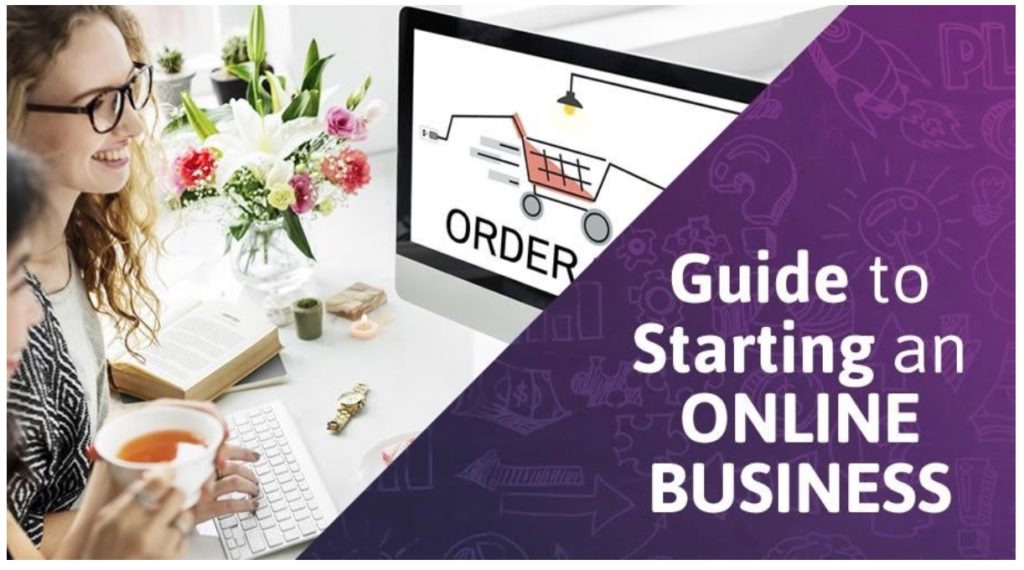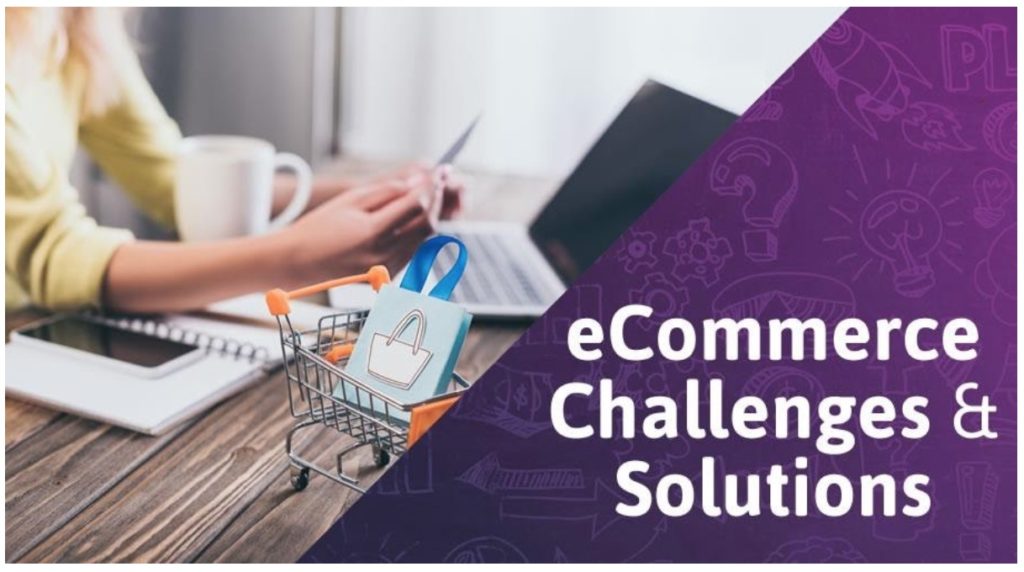Business
5 steps to help you build an eCommerce store
If you have decided to take the plunge and set up a web-based shop, starting an eCommerce business can be a rewarding venture but it can also be a stressful one. Here are 5 steps to starting an online business that will help make the process clearer and less stressful.


Your guide to starting an online business
Whether COVID-19 pushed you to pivot from a brick-and-mortar store to an online environment, or you’ve decided to take the plunge and set up a web-based shop, starting an eCommerce business can be a rewarding venture.
From 2017 to late 2019, approximately 28.1 million Canadians made purchases online. That’s a lot of people who are landing on webpages and whipping out their wallets if they like what they see.
But there’s more to the process than buying a domain name and loading your site with products or services. There are technical aspects to navigate and content to consider.
Do you DIY with a website builder or hire a pro? Should you stick to SEO or focus on paid ads too?
As a small business owner, I’ve helped many clients create successful online companies. So I’m sharing this five-step guide to starting an online business with you to make the process clearer and less stressful.
Figure out what you want to sell
If you’ve already got an established store, this might be a breeze. But if you’re just starting an eCommerce business and are focusing on products, you’ll need to think about what you’ll offer, and where you’ll get it from.
The first thing in figuring out what to sell and in what form is to ensure it’s relevant to today’s consumer. COVID-19 has made consumers much more in tune with their spending habits. Ensure there is a consumer first and foremost who is willing to spend their money for the product you aim to sell.
Next define how you want to sell your products. Here are just a few of the options:
- Business-to-consumer (B2C): This is the most common business model, with many different approaches. Basically, you sell to the end user, but there may be a third party acting as a middleman (think Amazon).
- Direct-to-consumer (D2C): From design and manufacturing to sales and promotions, the company does everything. Dollar Shave Club is a good example of a D2C business who started small and grew using this model.
- Subscription service: Books, clothing, organic produce, baby gear…I could go on and on. Nearly every industry out there has harnessed the power of subscription services to deliver cost and time savings to customers on a regular basis.
- Dropshipping: Rather than having to stock a warehouse full of products, when you sell a product on your site, you’re essentially purchasing the item from a third party, who ships it directly to the customer.
Buy a domain name
If you already have a business name, this part could be simple. However, you’re not going to get a short and sweet dot com name unless you lay down big bucks. And you don’t want a domain name that runs five words long or is difficult for customers to remember (or spell).
Ideally, you use your company name like we did, with a dot com—or a dot ca if you’re in Canada. There are a lot of other TDLs (Top Level Domains) to consider such as .net, .co and .org but strive to get the revered .com as your primary domain if at all possible.
Build an eCommerce store
From incorporating branding into your layout to loading products/services, there are so many things to consider when you’re starting an eCommerce business, including:
- Your shopping cart software. Shopping carts can be built with a variety of coding languages including ASP, PHP, JavaScript and HTML. They can be provided by a 3rd party service provider (such as Shopify) or installed in your WordPress website like WooCommerce to avoid monthly fees.
- Choosing the best shopping cart software requires a lot of pros and cons analysis of each choice. Many times the choice depends on your needs, your budget and the desired functionality.
- The visuals (copy and images). How your store looks and feels to the shopper has a significant impact on whether they will trust making a purchase from you. Moreover, how each of your products are described along with using professional-looking photos can make or break a sale if not done properly.
- Installing a Secured Security Layer (SSL) Certificate. This keeps your website secure and is mandatory in today’s online commerce environment. Even Google will favour your site’s search ranking if it detects an SSL installed.
- Your shipping model. If you’re selling physical products, you need to decide how they are going to get into the hands of the purchaser. Are you sending customers items directly? Or are you using a third-party? Will you offer free shipping, or ship internationally? Do you want the shipping automatically calculated on checkout or will it be a flat shipping rate?
- Your payment gateway. Are you going to accept only credit cards, or debit cards and PayPal too? Will you use a hosted gateway that takes people off your site to pay, then redirects them back? Or is an integrated payment gateway more your style?
This is where it is so worth it to hire a professional web development company. You won’t have to spend your time Googling “SSL Certificates” or trying to set up shopping cart software.
~~~~~
READ: 3 eCommerce Challenges & Solutions for Tough Times

To call these “tough times” may be a bit of an understatement to you, or perhaps you’ve pivoted your marketing strategy nicely and aren’t negatively affected by the COVID-19 crisis.
There’s no arguing this pandemic has led to increased internet traffic as people work, socialize, and entertain themselves online.
That’s why I’m sharing 3 eCommerce challenges and solutions to help you maintain and even grow as an entrepreneur during this crisis.
Read more on our website.
~~~~~
Focus on SEO
Did you know that SEO has the highest ROI of any online marketing tactic? Despite this fact, many small business owners build their sites with very little consideration of how the search engines see their content.
SEO means doing keyword research to discover the keywords that your target audience is using to find what they need.
Your SEO strategy will be focused largely on on-page techniques like keyword-rich content and meta tags.
Create valuable content
Your customers don’t just want to see pages and pages of products, or a one-liner selling them services. They want you to be a trusted expert who can provide them with everything from useful tips to reassurance that their credit card info is safe.
Content marketing is an ongoing process. If you want to please your target audience and the search engines, you’ll need to be regularly posting articles, blogs and videos that are valuable to your audience.
***
No matter what your small business model is, you’ll need to keep testing and tweaking after you build an eCommerce store. You’ll want to dive into your data to see your customers’ behaviour, like:
- Are they spending time reading your carefully crafted content?
- Is there a broken link that’s causing people to abandon their shopping carts before they’re finished buying?
- How many of your website visitors are converting into customers?
Of course, there’s a lot more to starting a web-based business than what I’m able to cover here! From promoting your business on social media to creating paid ads to drive traffic, you’ll want to have a marketing strategy in place as you move forward. But this guide to starting an online business will help you lay a solid foundation for a successful eCommerce site.
—
(Featured image by Igor Miske via Unsplash)
DISCLAIMER: This article was written by a third party contributor and does not reflect the opinion of Born2Invest, its management, staff or its associates. Please review our disclaimer for more information.
This article may include forward-looking statements. These forward-looking statements generally are identified by the words “believe,” “project,” “estimate,” “become,” “plan,” “will,” and similar expressions. These forward-looking statements involve known and unknown risks as well as uncertainties, including those discussed in the following cautionary statements and elsewhere in this article and on this site. Although the Company may believe that its expectations are based on reasonable assumptions, the actual results that the Company may achieve may differ materially from any forward-looking statements, which reflect the opinions of the management of the Company only as of the date hereof. Additionally, please make sure to read these important disclosures.

-

 Fintech2 weeks ago
Fintech2 weeks agoKrealo Invests in Akua to Transform Payments in Latin America
-

 Biotech6 days ago
Biotech6 days agoEU Biotech Act Reaches Turning Point as Parliament Rewrites Report and Commission Splits Proposal
-

 Biotech2 weeks ago
Biotech2 weeks agoEMA Backs Waskyra Gene Therapy and Recommends Ten New Medicines
-

 Impact Investing3 days ago
Impact Investing3 days agoITA Airways Unveils First Sustainability Report, Marking Major ESG Milestone
























